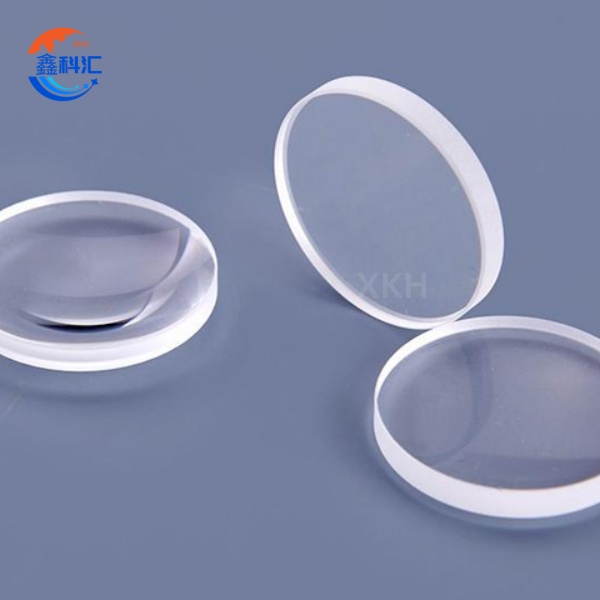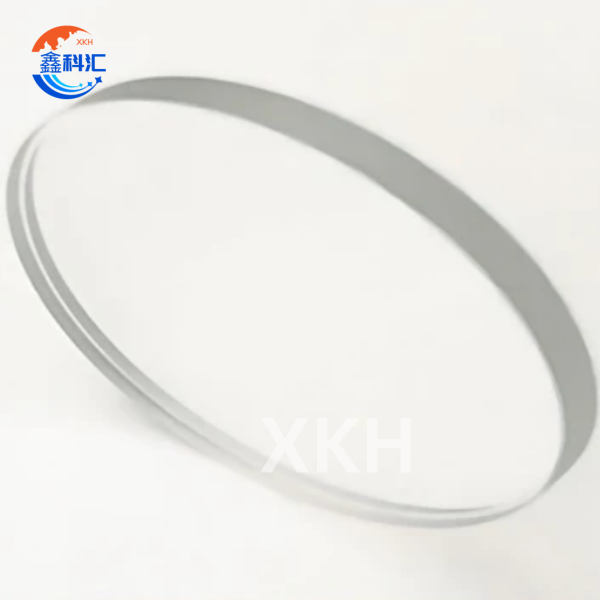Customized Sapphire Optical Windows High Purity Transmittance ≥90%
Technical parameters
| Item | Optical Window |
| Material | BK7, JGS1, UV Fused Silica, Sapphire etc |
| Dimension | 1mm-300mm |
| Dimension tolerance | ±0.05mm |
| Surface quality | 20-10~60-40 |
| Surface flatness | 1/4~1/8 |
| Clear aperture | above 90% |
| Coating | 200-4000nm |
| Application | Laser, light transmittance, display,etc. |
Key Characteristics
1.Extreme Environment Adaptability
Sapphire optical windows demonstrate exceptional performance with a melting point of 2053°C, maintaining structural integrity in continuous 1000°C operating environments. This thermal stability is enabled by an ultra-low coefficient of thermal expansion (CTE) of 5.3×10⁻⁶/K along the C-axis, significantly superior to conventional optical glasses. Chemically, sapphire optical windows exhibit remarkable inertness, resisting all strong acids (except HF) and alkalis, making them ideal for chemical processing equipment and marine applications. Mechanically, these windows boast flexural strength exceeding 1000MPa (5-8 times stronger than standard optical glass) with outstanding impact resistance.
2.Optical Performance Advantages
Sapphire optical windows provide >80% transmission across a broad spectral range (200-5500nm at 2mm thickness). Through optimized crystal orientation (e.g., C-axis perpendicular to light path), birefringence effects are effectively minimized. Surface quality meets stringent optical requirements with λ/10 flatness at 633nm and surface roughness <0.5nm RMS.
3.Advanced Manufacturing Capabilities
Our sapphire optical windows support large-format processing (>300mm diameter) and complex geometries including aspheric and stepped configurations. Specialized edge sealing technology achieves leak rates <1×10⁻⁹Pa·m³/s for vacuum applications. With diamond-like carbon (DLC) coatings, the laser-induced damage threshold (LIDT) reaches 15J/cm² (1064nm, 10ns pulses).
Primary Applications
1.Defense & Aerospace
Sapphire optical windows serve as missile domes, withstanding extreme thermal shocks (>1000°C) during hypersonic flight. Space-grade variants guarantee over 15 years of orbital service life in spacecraft applications.
2.Industrial Equipment
In semiconductor fabrication, sapphire optical windows function as plasma-resistant viewports in etch and CVD chambers. High-temperature endoscopes utilize these windows for clear imaging in 1500°C furnace environments.
3.Scientific Instruments
High-purity sapphire optical windows (<5ppm impurities) minimize X-ray absorption in synchrotron beamlines. Their low nonlinearity preserves femtosecond pulse fidelity in ultrafast laser systems.
4.Commercial Devices
Deep-sea submersibles employ sapphire optical windows rated for 6000m depths (>60MPa). Smartphone cameras integrate these windows as protective covers, leveraging their Mohs 9 scratch resistance for enhanced durability.
Sapphire optical windows continue to expand their applications through advancements in large-format processing, complex geometries, and enhanced performance characteristics, solidifying their position as critical components across high-tech industries.
XKH services
XKH comprehensive service platform integrates cutting-edge manufacturing expertise with robust technical support to deliver end-to-end sapphire optical window solutions. The custom manufacturing division offers drawing-based processing with full 2D/3D file conversion capabilities, complemented by Design for Manufacturing (DFM) optimization services that reduce production risks and costs. We maintain industry-leading rapid prototyping capabilities, delivering Φ100mm functional samples within 5 business days to accelerate product development cycles. Advanced functional treatments include precision conductive coatings with sheet resistance tunable from 10-1000Ω/□ for EMI shielding applications, along with proprietary anti-fog films that maintain optical clarity in high-humidity environments.
The technical support infrastructure features a dedicated engineering team utilizing Zemax and CodeV optical simulation software to model system performance and predict thermal/mechanical behavior under operational conditions. Our material diagnostics laboratory, equipped with scanning electron microscopy (SEM) and energy-dispersive X-ray spectroscopy (EDS), provides root-cause failure analysis for reliability improvement. Environmental validation services include extreme thermal cycling tests (-196℃ to 800℃) and 500-hour salt spray exposure per MIL-STD-810G standards, ensuring component durability in harsh operating conditions.
Quality assurance systems implement full material traceability from crystal boule to finished product, with each component accompanied by comprehensive certification documentation. State-of-the-art metrology capabilities include 4D phase-shifting interferometry for λ/50 surface accuracy verification, white-light interferometry achieving 0.1nm surface roughness resolution, and spectrophotometric analysis covering 190-3300nm spectral range for transmission/reflectance characterization.
Value-added services address specialized application requirements, including vacuum integration solutions featuring metallized edges with hermetic brazing for ultra-high vacuum (UHV) systems. Electrostatic discharge (ESD) control services tailor surface resistance between 10⁶-10⁹Ω to prevent charge accumulation in sensitive instruments. All components undergo final packaging in Class 100 cleanroom environments, with optional particle counting and vacuum-baked packaging for semiconductor-grade cleanliness requirements.












